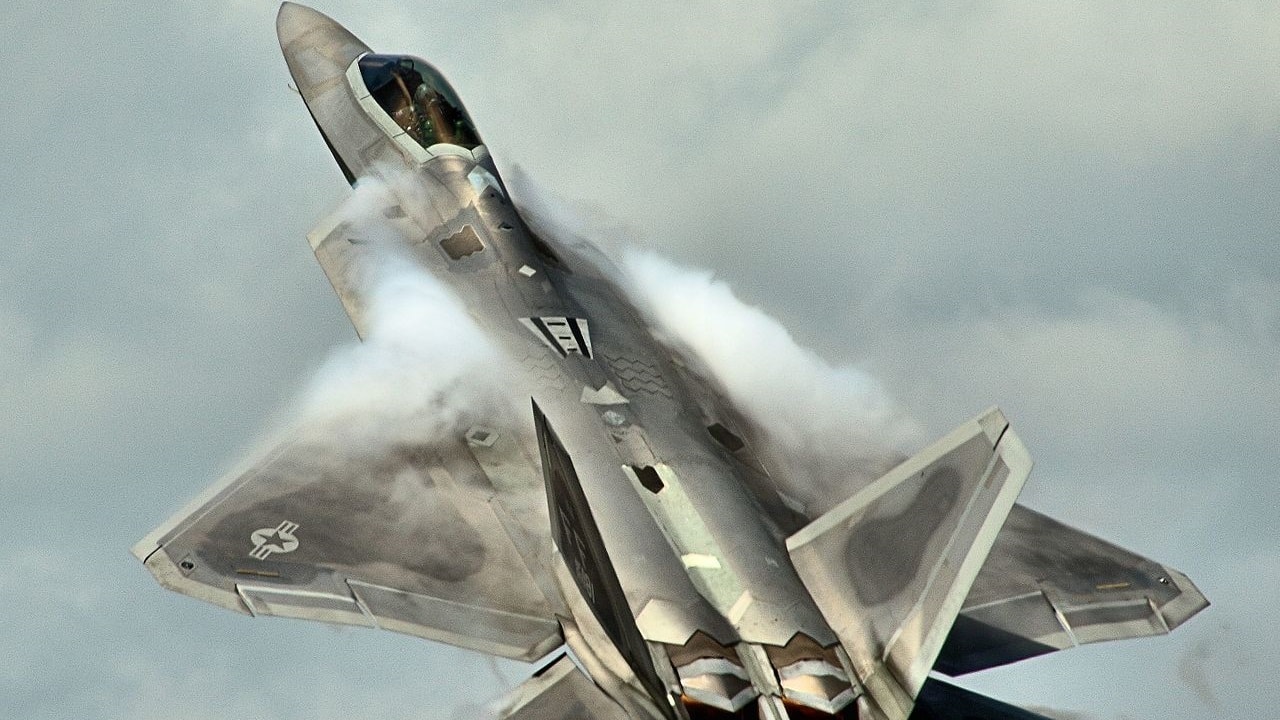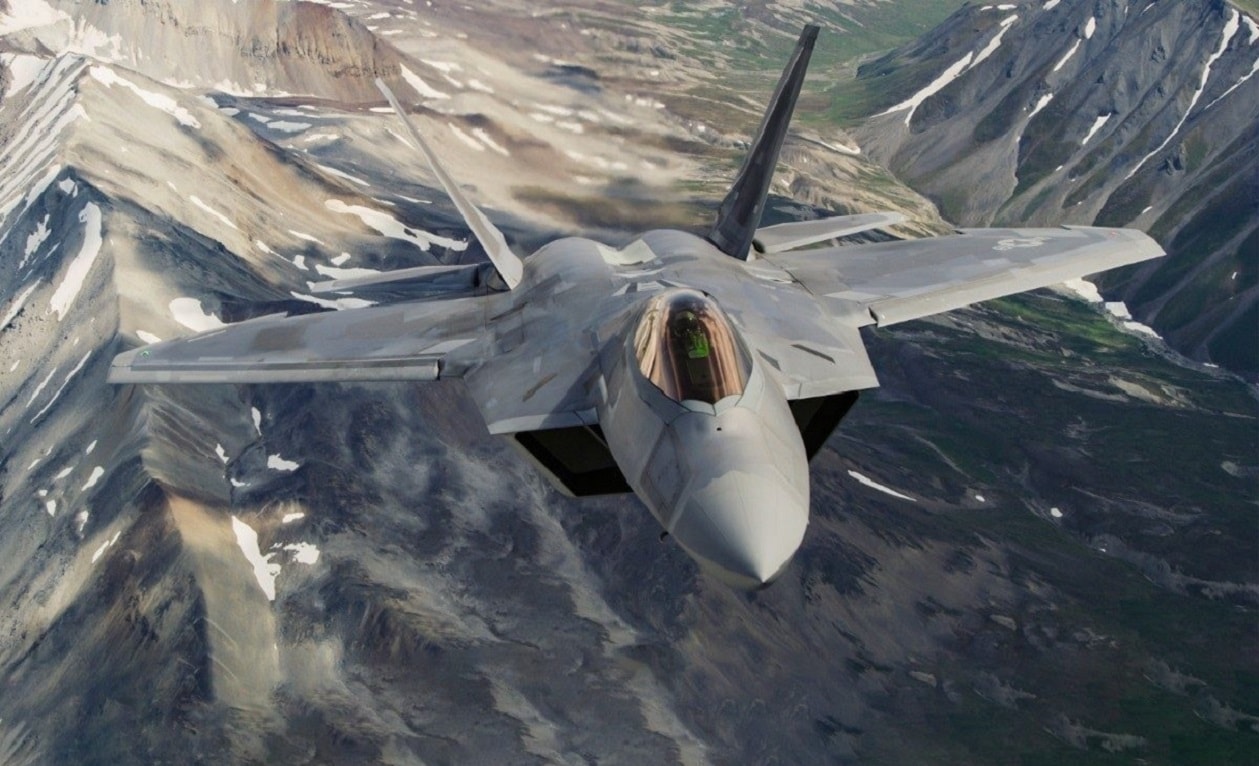Article Summary: The only time the F-22 Raptor has ever been defeated anywhere is when the U.S. government slashed the amount of these excellent fighters to be built.
Can you imagine if the U.S. Air Force today had 750 F-22 Raptor fighter jets? That was the original plan, but production was cut short by then Secretary of Defense Robert Gates 16 years ago. He decided to stop the building of additional F-22s and kept the number limited to around 195 stealth warplanes and later dropped that to 187. But 750 would have been a whopping number of F-22s that would have definitely helped U.S. force posture in Europe, the Middle East, and Asia today.
The F-22 Was Not Mission Essential During the Wars in Iraq and Afghanistan
When Gates decided to limit the Raptors in 2009, the wars in the Middle East and South Asia were primarily counter-terror and counter-insurgency fights. An air superiority fighter like the F-22 was better aligned with dog-fighting rather than ground strike for close air support. Gates figured that the military did not need such a high number of F-22s because there was no near peer adversary to threaten U.S. dominance in the skies.
That has since changed, with Russia and China roaring back into relevance and the Americans scrambling to prepare for fighting a great power war.
Large International Presence Possible
This high number of F-22s would have allowed the Air Force to replace all F-15s on a one-for-one basis. The Pentagon could have based around 40 percent of the F-22 fleet outside the United States to better project power and blunt the ability of Russia or China to mount some type of air incursion against the Americans and their allies.
NATO would have been stronger and better able to deter Russia. Japan, South Korea, and Guam would have more F-22s to protect their personnel against China and North Korea.
The Air Force could have populated an estimated eight active-duty F-22 air wings. Then there could have been enough fighters for at least one wing for the Air National Guard.
F-22 Force Structure in the Early Days
The first F-22s arrived at Nellis Air Force Base, Nevada in 2003. This was the location for training pilots and aircrews for flying and maintaining the Raptor.
It was decided early on to have F-22s in wings at “Langley in Virginia, Holloman in New Mexico, Tyndall in Florida, and Elmendorf in Alaska, with small numbers of aircraft in Hawaii,” according to Key.Aero.com.
In 2006, the Air Force looked at the best way to organize the force structure. Each F-22 squadron would have 18 airplanes at three squadrons per wing. Due to fewer F-22s being built, the service branch decided to re-organize in 2010 from six squadrons with 18-21 aircraft each to five squadrons with 24 jets.
The Air Force cut the number of F-22s and restructured again in 2015 and 2018. As of 2023, “only five of the Air Force’s 55 combat coded fighter squadrons are equipped with the F-22,” Key.Aero wrote.
Where Are the F-22s Being Deployed Internationally?
Internationally, the Raptor was first deployed to Kadena Air Base, in Okinawa in 2007. Twelve Raptors were sent there. By 2024, F-22s were operating in the Middle East to counter threats by Iran and their proxies in Yemen – the Houthi terrorists. Four from Pearl Harbor were sent to South Korea for military exercises with the Republic of Korea Air Force. Four F-22s were also deployed to Germany from Tyndall Air Force Base, Florida.
So, the Air Force’s idea is now to surge the F-22s depending on the threat environments due to the rise of China, Russia, North Korea, and Iran. But four here and four there would not be able to make much of a difference if all-out warfare started.
Having the entire 750 complement of F-22s would mean that full squadrons of F-22s could be permanently based in Germany, South Korea, Okinawa, and Guam.
Since the F-22s are such good dog-fighters with some of the best stealth attributes in the world, they would have given the Air Force generals confidence about answering the call if a great power rose up and challenged the United States in a shooting conflict.
Keep Some In Reserve for an Extended Conflct
Then more F-22s from America could be sent to a battle as those on the continent would be kept in reserve for Day Four and Five of warfare. The Air Force would have a penultimate advantage with all of the F-22s it had on hand.
We will never know how the force structure would have been positively changed. Raptors were not seen as make or break airplanes in 2009.
Gates, having known how powerful American adversaries would come and how China and Russia were developing their own stealth airplanes in the 2010s and 2020s, probably wishes he would have made a different decision.
More F-22s would have made a huge difference in the aerial order of battle. They could have populated many different bases around the world.

F-22 Raptor.
This could have deterred the great power countries and made the United States more feared abroad.
But it was not meant to be, and the Air Force will have to keep sending a handful of Raptors to hot spots around the world and rotate them in and out. This is not the same as having them permanently around the globe to answer the 21st century threat environment.
About the Author: Dr. Brent M. Eastwood
Brent M. Eastwood, PhD, is the author of Don’t Turn Your Back On the World: a Conservative Foreign Policy and Humans, Machines, and Data: Future Trends in Warfare plus two other books. Brent was the founder and CEO of a tech firm that predicted world events using artificial intelligence. He served as a legislative fellow for U.S. Senator Tim Scott and advised the senator on defense and foreign policy issues. He has taught at American University, George Washington University, and George Mason University. Brent is a former U.S. Army Infantry officer. He can be followed on X @BMEastwood.

